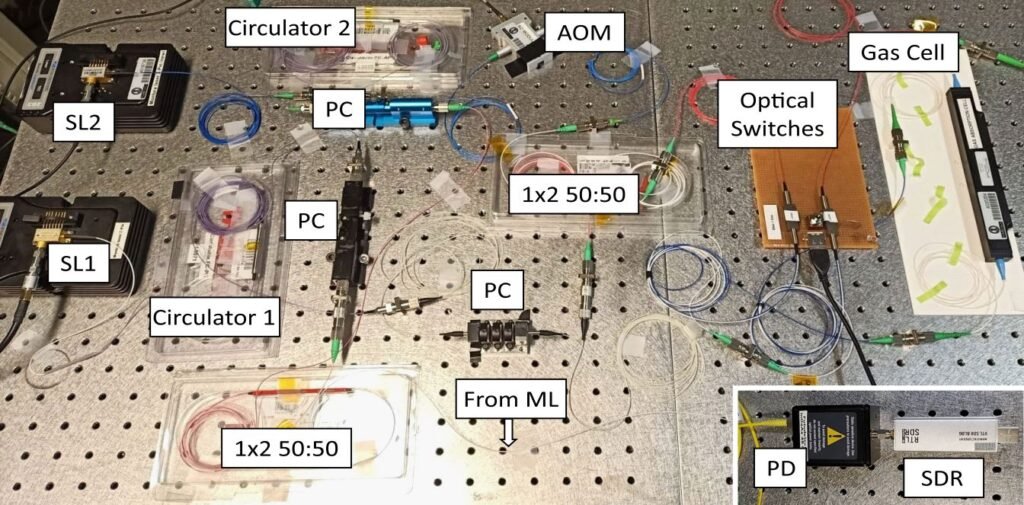Thank you to Antonio from the Polytechnic University of Madrid, Department of Photonic Technology and Bioengineering for writing in and sharing with us his teams latest research titled "Dual-Comb Spectrometer Based on Gain-Switched Semiconductor Lasers and a Low-Cost Software-Defined Radio". The research involves the use of an RTL-SDR Blog V3 dongle in place of an expensive digital oscilloscope for measuring the output of a dual-comb spectrometer. The abstract of the paper reads as follows:
Dual-comb spectroscopy has become a topic of growing interest in recent years due to the advantages it offers in terms of frequency resolution, accuracy, acquisition speed, and signal-to-noise ratio, with respect to other existing spectroscopic techniques. In addition, its characteristic of mapping the optical frequencies into radio-frequency ranges opens up the possibility of using non-demanding digitizers.
In this paper, we show that a low-cost software defined radio platform can be used as a receiver to obtain such signals accurately using a dual-comb spectrometer based on gain-switched semiconductor lasers.
We compare its performance with that of a real-time digital oscilloscope, finding similar results for both digitizers. We measure an absorption line of a H13C14N cell and obtain that for an integration time of 1 s, the deviation obtained between the experimental data and the Voigt profile fitted to these data is around 0.97% using the low-cost digitizer while it is around 0.84% when using the high-end digitizer.
The use of both technologies, semiconductor lasers and low-cost software defined radio platforms, can pave the way towards the development of cost-efficient dual-comb spectrometers.
The paper can be freely accessed on IEEE Access which is open access.
We note that in the past we've also seen an RTL-SDR used as part of a low cost Ozone spectrometer experiment, and and Airspy used in an optical FM spectroscopy experiment.

